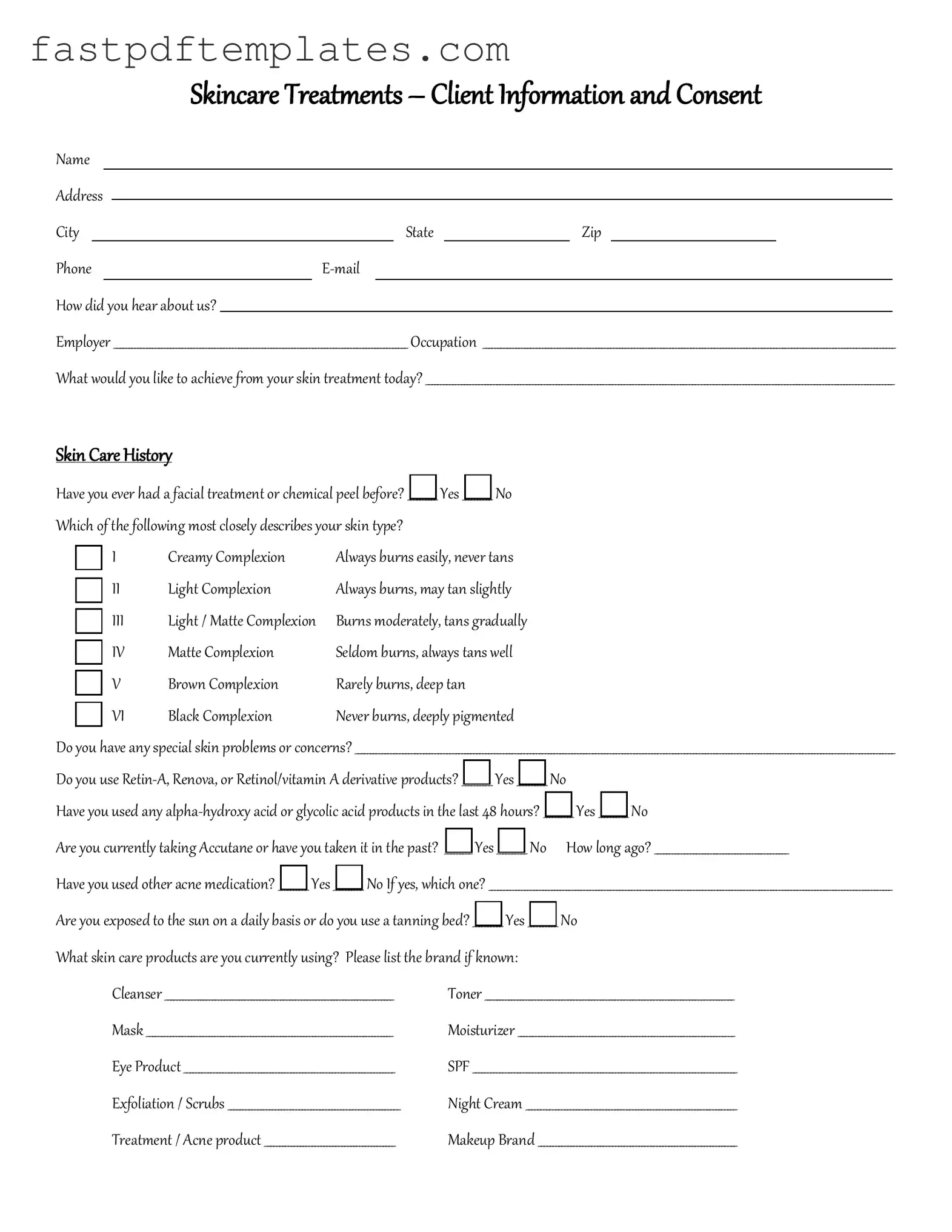The Facial Consent form shares similarities with the Medical Release form. Both documents require individuals to give permission for specific procedures or treatments. In the case of the Medical Release form, patients authorize healthcare providers to share their medical information with third parties. This ensures that all parties involved understand the scope of consent and the potential risks associated with the procedures or treatments being performed.
Another document akin to the Facial Consent form is the Informed Consent form. This form is often used in medical and cosmetic procedures to ensure that the patient is fully aware of the risks, benefits, and alternatives to the treatment. Like the Facial Consent form, it emphasizes the importance of patient understanding and voluntary agreement before proceeding with any procedure.
The Photography Consent form is also similar. This document is used to obtain permission from individuals to take and use their photographs for specific purposes, such as marketing or documentation. Just as the Facial Consent form secures agreement for facial treatments, the Photography Consent form ensures that individuals are informed about how their images will be used and can decide whether to grant permission.
The Release of Liability form parallels the Facial Consent form in that it protects service providers from legal claims. When individuals sign this document, they acknowledge the risks involved in a particular activity and agree not to hold the provider responsible for any injuries or damages. Both forms serve to inform individuals about potential risks and secure their consent to proceed.
The Waiver form is another document that bears resemblance to the Facial Consent form. A waiver is often used in various contexts to relinquish a right or claim. In cosmetic procedures, a waiver may be signed to acknowledge the risks involved, similar to how the Facial Consent form outlines the potential effects of facial treatments. Both documents aim to ensure that individuals are aware of what they are consenting to.
The Treatment Consent form is closely related as well. This document specifically outlines the details of a treatment plan, including what will be done and any associated risks. Much like the Facial Consent form, the Treatment Consent form seeks to ensure that individuals have a clear understanding of the procedures they are agreeing to and the implications of that agreement.
The Acknowledgment of Risk form is another similar document. This form requires individuals to recognize and accept the risks associated with a specific activity or treatment. It serves a similar purpose to the Facial Consent form by ensuring that individuals are informed and consenting to the risks involved in facial procedures.
The Patient Agreement form also shares common ground with the Facial Consent form. This document outlines the responsibilities of both the patient and the provider in a treatment setting. It emphasizes mutual understanding and agreement, just as the Facial Consent form does regarding the procedures and expectations of facial treatments.
The Authorization for Treatment form is yet another document that aligns with the Facial Consent form. This form grants healthcare providers permission to administer specific treatments. Like the Facial Consent form, it ensures that individuals are aware of what they are consenting to and the potential outcomes of the treatment.
Lastly, the Non-Disclosure Agreement (NDA) can be compared to the Facial Consent form in terms of confidentiality. While NDAs focus on protecting sensitive information, both documents emphasize the importance of understanding and agreeing to terms before proceeding with a specific action. Each form serves to protect the interests of the involved parties while ensuring informed consent is obtained.


